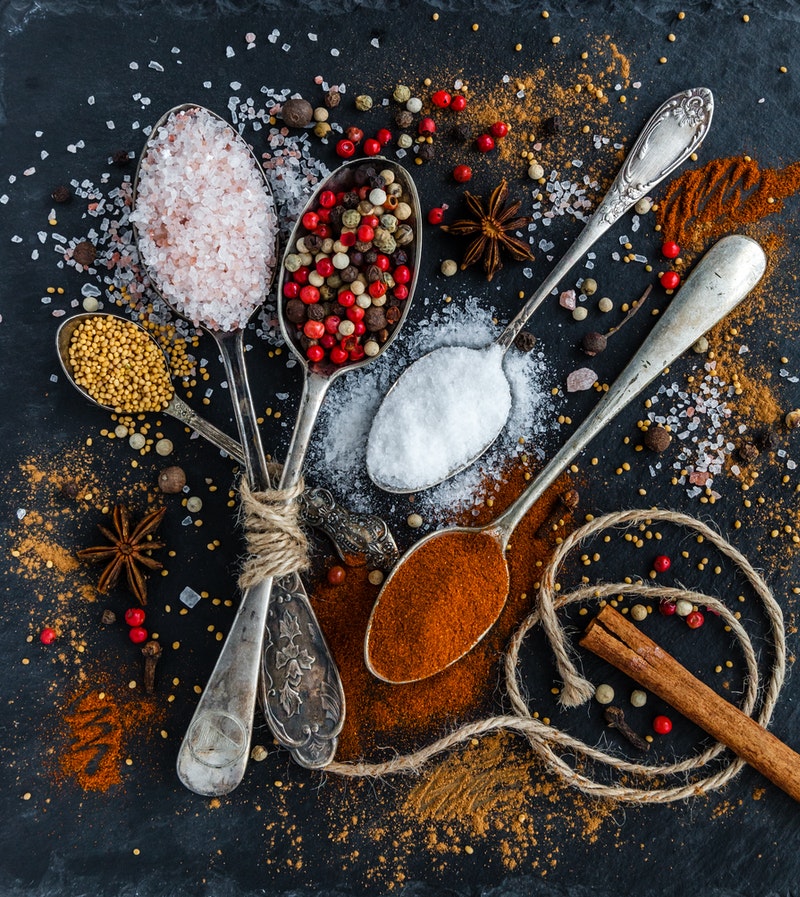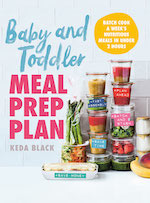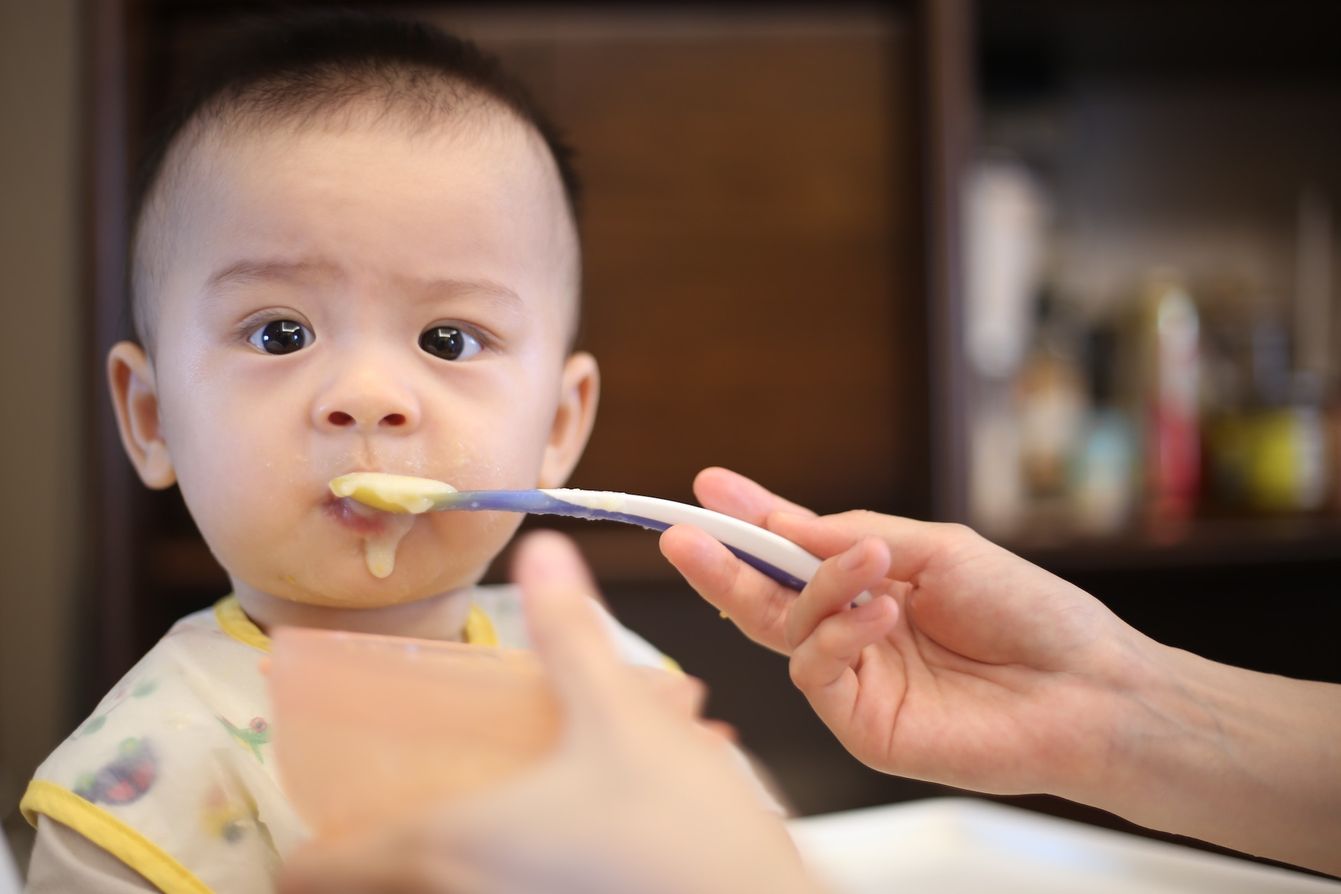Find out when to start introducing solids to babies, what foods to feed them and six tips to make that journey much smoother and successful.
When to start introducing solids
It’s not recommended to start offering solids to your baby before they are four months old. You should exclusively breastfeed or formula feed your baby until they are six months of age, unless otherwise advised by your doctor.
From around six months of age, the iron stores of babies start to deplete. This means they won’t be able to get the iron they need from breast milk or formula alone.
You’ll know your baby is ready to start solids when they:
- have good head and neck control
- are able to sit upright when supported (such as in a high chair)
- start to put things in their mouth
- show an interest in watching other people eat or try to grab your food
- open their mouth when you offer them food
While most babies will show these signs at around six months old, they may also happen at a different time for different babies.
Relevant: Weaning your baby from breastfeeding and other questions
What foods to feed your baby when they start solids
Introducing solids to babies is all about helping them learn to eat. So include a variety of tastes and textures, as well as a variety of foods.
Teaching them to eat isn’t only for the nutritional value, however. It’s through the process of eating that babies learn skills that will help with language development later.
“My personal philosophy is to start with feeding veggies only, such as cooked and pureed pumpkin, carrot, zucchini and raw mashed avocado,” says Kathy Fray. She is a senior midwife who’s been a bestselling birth-babies-motherhood author since 2005.
“Once veggies are progressing well, then introduce fruit such as cooked and pureed apple, apricot, peach, pear, mango and ripe mashed banana. Tinned fruit in juice (not syrup) is fine for pureeing.
It’s also important to introduced iron-rich foods or iron-fortified foods (in puree form) since as babies will need to build up their iron stores.
Always supervise your child when they’re eating to prevent choking. Also, be on the look-out for choking hazards, especially with hard foods such as nuts and meat with small bones.
6 hacks to make introducing solids easier
To help make it easier for introducing solids to your baby, Keda Black, French home cook and food writer, has these tips to share from her book, Baby + Toddler Meal Prep Plan.
1. Cooking methods
Steaming, cooking in just a little water in a covered saucepan, and boiling are preferable to other methods. The first two methods are better for preserving nutrients. Cook foods for a fairly long time (adjust the cooking times to suit the size of the pieces and the steamer) so that the vegetables are soft and can be puréed easily until smooth. For the very first purées, which are really more about introducing flavours than nutrition, boiling is probably the quickest and most practical option.
Pan-frying is not suggested for many dishes. When you start preparing small meals (at around nine months), you can brown food quickly in a little fat, over medium heat, for the flavour.
In the beginning, vegetables, fish and meat tend to be cooked separately. This is more practical for combining different foods to suit your baby’s tastes and what they are familiar with or have yet to discover. Bit by bit, the meals move closer to more traditional ways of cooking, where ingredients are combined for the flavour.
2. Salt, sugar, fat and spices

Eliminate salt and sugar altogether to start with, and then introduce them sparingly. Start at about 12 months of age or a little before, but only very tiny pinches. Your baby doesn’t need added salt or sugar, and remember that processed or packaged foods will contain high amounts of both.
Fat is not forbidden. Adding a little bit to purées is a quick way of improving their flavour. You can use all kinds of herbs and spices, introducing them little by little in very small quantities. Make sure you purée them well.
Your baby’s food can be adapted from the family meal: set aside a portion of pumpkin to cook without salt, purée a small piece of broccoli . . .
3. Equipment
Cooking for your baby doesn’t require any special equipment, but these can help save time:
- A saucepan and lid
- A steamer, a Chinese bamboo steamer basket or a metal steamer insert
- Something for puréeing (blender, processor, stick blender), mashing (masher or fork) or you might even want to use a food mill (it takes longer but it produces a very nice texture). Don’t purée potato in a blender or food processor as it will become gluey.
4. Choosing produce
Just as for adults, it’s a good idea to eat seasonally. The more organic the fruits and vegetables, the better.
Peel fruits and vegetables in the beginning to make very smooth purées. Later, if the fruits and vegetables are organic and well washed, there’s no reason to peel everything.
5. Storage
In theory, a homemade fruit or vegetable purée kept in the refrigerator should be consumed within 48 hours. This is why, when cooking for your baby in advance, we recommend freezing anything that won’t be eaten the next day (or the day after). The ideal is to thaw each day’s food the day before or in the morning, in the refrigerator of course.
If you use frozen raw foods, such as peas or spinach, add them to a dish that is cooked. If you are pre-preparing a meal, it is safe to freeze the preparation afterwards. When you freeze a preparation, be careful not to fill containers right to the top, especially glass ones: the liquid in the food expands during freezing and can cause the glass to break. Do not refreeze any thawed food.
If you have leftovers, don’t hesitate to freeze them in ice cube trays, and once they are frozen you can put the cubes in freezer bags. Don’t forget to label your food clearly (weight, date and contents), otherwise you’ll quickly lose track.
6. Containers
You will need 150 ml and 250 ml jars or containers, and some a little larger for meals for babies who are over 12 months old. A cost-effective way is to reuse the jars from store-bought baby foods if you use them. You can also freeze food in ice cube trays if you don’t have enough containers.
Learn how to make creamy guacamole, the perfect first food for baby.

Image from Baby + Toddler Meal Prep Plan by Keda Black, photography by Pierre Javelle. Murdoch Books RRP $29.99

How helpful was this article?
Click on a star to rate it!
0 / 5. 0
Be the first to rate this post!
Mums At The Table
Related posts
Subscribe
Receive personalised articles from experts and wellness inspiration weekly!


